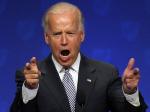PHILADELPHIA — The NFL has reached a tentative $765 million settlement over concussion-related brain injuries among its 18,000 former players, agreeing to compensate sufferers, pay for medical exams and underwrite research.
Videos by Rare
The agreement, which is subject to approval by a federal judge, was announced Thursday after months of court-ordered mediation. It came just days before the start of the 2013 season.
More than 4,500 former athletes — some suffering from dementia, depression or Alzheimer’s that they blamed on repeated blows to the head — have sued the NFL since the first case was filed in Philadelphia in 2011.
They accused the league of concealing the long-term dangers of concussions and rushing injured players back onto the field, while glorifying and profiting from the kind of bone-jarring hits that make for spectacular highlight-reel footage.
Under the settlement, individual payouts would be capped at $5 million for men with Alzheimer’s disease; $4 million for those diagnosed after their deaths with a brain condition called chronic traumatic encephalopathy; and $3 million for players with dementia, said lead plaintiffs’ lawyer Christopher Seeger.
The NFL has insisted that safety has always been a top priority, and in settling the thousands of cases it admitted no wrongdoing. The NFL said Commissioner Roger Goodell told pro football’s lawyers to “do the right thing for the game and the men who played it.”
The plaintiffs include Hall of Famer Tony Dorsett, Super Bowl-winning quarterback Jim McMahon and the family of Pro Bowl selection Junior Seau, who committed suicide last year.
Kevin Turner, a former running back with the Patriots and Eagles who has amyotrophic lateral sclerosis, or Lou Gehrig’s disease, thanked the two sides for reaching an agreement that he thought most ex-players would support.
“Chances are … I won’t make it to 50 or 60,” said Turner, now 44. “I have money now to put back for my children to go to college and for a little something to be there financially.”
All former NFL players are eligible to seek care, screening or compensation. The amounts they receive will be based on their age, condition and years of play.
Players’ lawyers said they expect the fund to cover the ex-athletes’ expenses for 65 years. Current players are not covered.
Senior U.S. District Judge Anita Brody in Philadelphia announced the proposed agreement and will consider approving it at a later date.
The settlement most likely means the NFL won’t have to disclose internal files about what it knew, and when, about concussion-linked brain problems. Some observers had warned that the lawsuits could cost the league $1 billion or more if they were allowed to move forward in court.
“I think it’s more important that the players have finality, that they’re vindicated, and that as soon as the court approves the settlement they can begin to get screening, and those that are injured can get their compensation. I think that’s more important than looking at some documents,” said lawyer Sol Weiss of Philadelphia, who filed the first lawsuit on behalf of former Atlanta Falcon Ray Easterling and a few others. Easterling later committed suicide.
In court arguments before Brody in April, the NFL asked the judge to dismiss the lawsuits and send them to arbitration under terms of the players’ contract. The league argued that individual teams bear the chief responsibility for health and safety under the collective bargaining agreement, along with the players’ union and the players themselves.
But the players’ lawyers accused the NFL of concealing for decades studies linking concussions to neurological problems.
Dorsett said each day is getting harder for him, as he struggles with memory problems.
“It’s frustrating. Frustrating. And to have a 10-year old daughter who says to her mother, ‘Daddy can’t do this because Daddy won’t remember how to do it,’ it’s not a good feeling,” he said. “I’m glad to see there’s been … acknowledgment that football has had something to do with a lot of the issues us players are going through right now.”
In recent years, a string of former NFL players and other athletes who suffered concussions have been diagnosed after their deaths with CTE, including both Seau and Easterling. More than 4,500 former players eventually joined the litigation. The number of claims, including spouses and survivors, could top 20,000, theNFL said.
While some of those who sued suffered brain ailments, others were worried about future problems and wanted their health monitored.
The lawsuits and a growing awareness that concussions — once routinely laughed off by football players as “Getting your bell rung” — can have serious long-term effects have already spurred research into better helmets and changed the way the game is played.
The NFL has instituted rule changes designed to eliminate hits to the head and neck, protect defenseless players, and prevent athletes who have had concussions from playing or practicing until they are fully recovered. Independent neurologists must be consulted before a player can return to action.
One key rule change that takes effect this season bars ball carriers from using the crown of the helmet to make contact with defenders.


